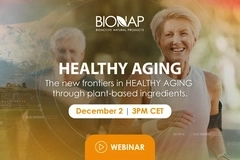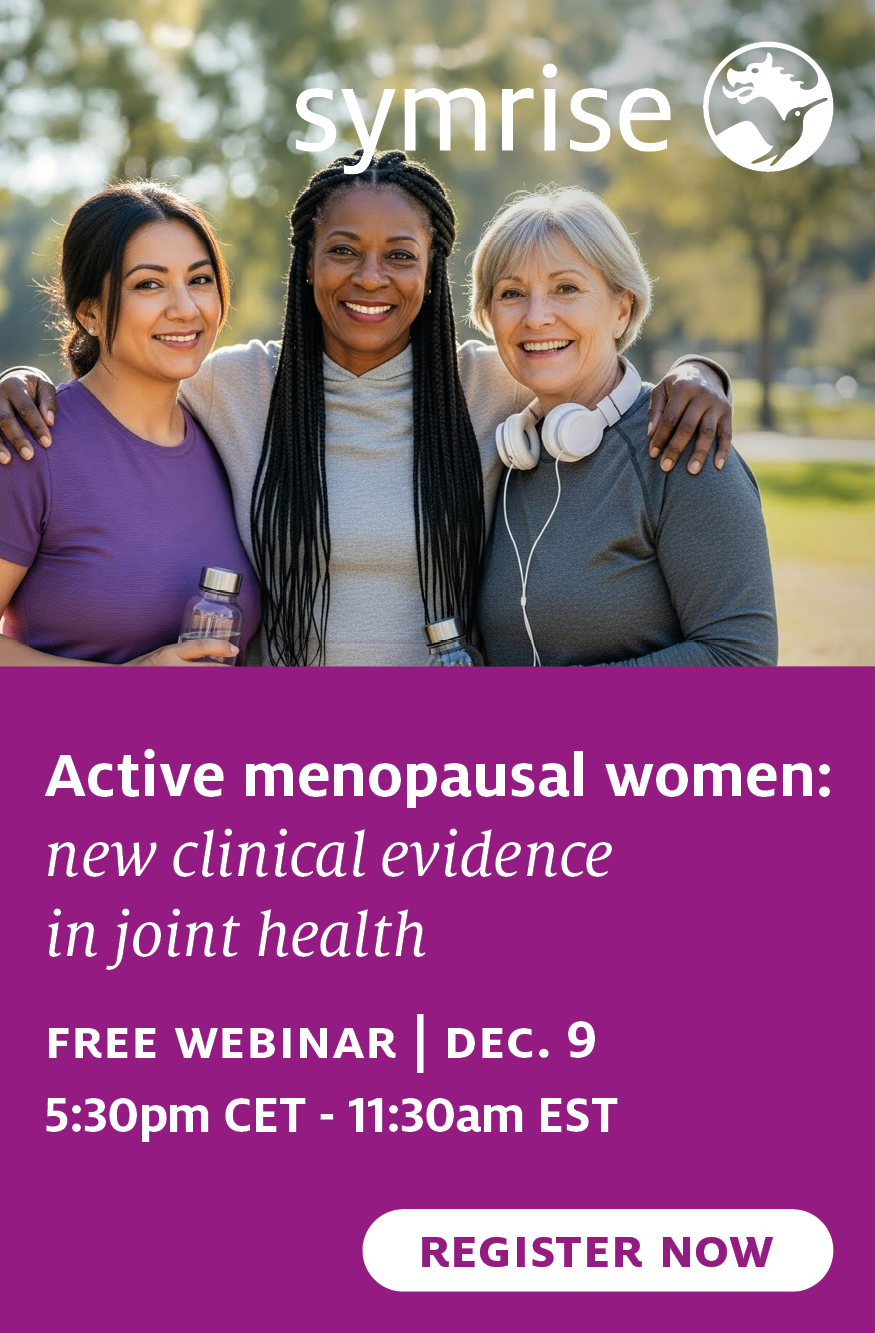World Cancer Day: Nutritional links highlighted amid calls for government action
04 Feb 2020 --- With obesity being the biggest cause of cancer after smoking, nutrition can have a notable impact on cancer – and vice versa. To mark World Cancer Day, NutritionInsight takes a closer look at the latest movements in this space. The World Health Organization (WHO) and the International Agency for Research on Cancer (IARC)’s collaborative reports examine how the consumption of food and the fight against cancer interact. Meanwhile, the World Cancer Research Fund International (WCRF) is calling for tighter global restrictions on marketing food and non-alcoholic beverages high in fat, sugar and salt (HFSS) to children.

“Over the past ten years, the increasing trend toward obesity in many countries – especially high-income ones – has done harm to cancer control, with diet playing a large part in the occurrence of obesity,” Bernard Stewart, an editor of IARC’s World Cancer Report: Cancer research for cancer prevention and Professor of Medicine at UNSW Sydney, tells NutritionInsight.
According to WHO’s Report on Cancer: Setting priorities, investing wisely and providing care for all, obesity is already responsible for 6 percent of cases of breast cancer, 8 percent of colon cancer and 34 percent of corpus uteri. Additionally, its contribution will increase drastically over the next two decades with increasing obesity rates.
Good nutrition?
“We know that around 40 percent of cancers could be prevented if everyone had a healthier lifestyle, which includes eating a healthy diet, maintaining a healthy weight and not smoking. The research on nutrition and cancer survival is still in its infancy, but there is some evidence to suggest that good nutrition can improve the quality of life of people during and after cancer treatment,” adds Kate Oldridge-Turner, Head of Policy & Public Affairs at WCRF.
The WHO’s report highlights that a healthy diet includes plenty of whole grains, pulses, vegetables and fruit. High-calorie foods that are laden with sugar or fat, red meat and foods with a high salt content should be limited. Finally, processed meat and sugary drinks should be avoided altogether.
 A healthy diet includes whole grains, pulses, vegetables and fruit.However, Stewart notes that while poor nutrition can be readily described and a disease burden identified, there is no universally relevant definition of good nutrition. “Nutrition patterns vary markedly across the globe. Good nutrition might be identified as resulting in a long life expectancy or the relative absence of nutrition-related disease. Furthermore, the characteristics of good nutrition are not the same across the globe, and what is good nutrition in sub-Saharan Africa might not be good nutrition in Europe or Australia.”
A healthy diet includes whole grains, pulses, vegetables and fruit.However, Stewart notes that while poor nutrition can be readily described and a disease burden identified, there is no universally relevant definition of good nutrition. “Nutrition patterns vary markedly across the globe. Good nutrition might be identified as resulting in a long life expectancy or the relative absence of nutrition-related disease. Furthermore, the characteristics of good nutrition are not the same across the globe, and what is good nutrition in sub-Saharan Africa might not be good nutrition in Europe or Australia.”
Regional considerations
Furthermore, cancer cases and deaths occur unequally, with economically disadvantaged populations having poorer outcomes. This is due to factors including late diagnosis and inadequate access to treatment, notes WHO.
However, Stewart paints a more complex picture when it comes to the nutrition-cancer link and economic development. He highlights that in low- and middle-income countries, diets are high in vegetable content and low in calories, which is associated with a low risk of cancer. For example, rates of colorectal cancer in India and sub-Saharan Africa are lower than in other regions of the world. Additionally, he points out that breast cancer is associated with higher socioeconomic status in some high-income countries, even though these women have the advantage of good nutrition.
“Only in circumstances where poor nutrition involves a diet high in salted and preserved food, is increased risk of cancer – specifically stomach cancer – a problem,” notes Stewart. Additionally, he highlights that some individuals and communities in high-income countries have changed their dietary behavior to reduce the intake of processed and red meat, and reduce the intake of sugar-sweetened beverages. At the same time, they are increasing the cereal, vegetable and fruit content of their diet. “In high-income countries, risk of obesity-related cancer is decreased by adopting such a healthy diet,” he notes.
Diet and cancer prognoses
According to WHO, malnutrition in all of its forms – which include undernutrition, undernutrition, inadequate vitamins or minerals, overweight and obesity – is associated with poorer cancer prognoses. This includes a greater likelihood of recurrence or death during or after treatment.
Additionally, poor nutritional status is linked with increased risks for toxic effects of chemotherapy, lower quality of life and distress. Early clinical assessment, dietary counseling and, if necessary, nutritional supplements can improve quality of life and completion of treatment, notes the organization.
In light of the slew of insight linking diet and cancer, the Medical Nutrition International Industry (MNI) and Specialised Nutrition Europe (SNE) are calling on the European Commission (EC) to make nutritional interventions an integral part of cancer care in its Europe’s Beating Cancer Plan.
The organizations explain that one in three cancer patients are malnourished, which – in addition to increased mortality rates for patients – leads to an increased burden on healthcare resources, including longer hospital stay and additional costs. Within the EU alone, this is estimated to be €17 billion (US$19 billion) per year.
To counter this, MNI recommends that all cancer patients are screened for malnutrition, existing clinical nutrition guidelines for cancer patients be implemented and provide equal access to and reimbursement of medical nutrition to cancer patients.
Other points include establishing multidisciplinary teams in oncology, including a dietitian or registered nutritionist, as well as educating healthcare professionals, patient advocates and cancer patients about the importance of good nutrition status in cancer care.
However, maintaining good nutrition while fighting cancer can be extra complicated by patients having reduced taste function, revealed a recent study. This diminished taste is associated with a reduced appetite; avoidance of certain foods, including meat; and a lower intake of calories and protein.
 The WCRF highlights that protecting children from harmful marketing practices is a human rights issue.Government action is crucial
The WCRF highlights that protecting children from harmful marketing practices is a human rights issue.Government action is crucial
No single intervention can address the challenge of achieving healthy dietary patterns, highlights the IARC. Although evidence from trials, modeling and practical experience can guide action for effective change, the implementation of effective and equitable intervention policies – such as a sugar tax – is dependent on government action, the report states.
“Evidence from comprehensive community programs suggests that a combination of behavioral theory, commitment, and national and local actions are key factors in the design of programs and policies. However, when implementing programs that were successful in other regions, care needs to be taken to consider the local context and the specific needs of the population,” says the report.
The role of policy is also emphasized by Oldridge-Turner. “We think the government has a vital part to play in ensuring everyone has access to good nutrition. We are currently living in unhealthy environments, where unhealthy food is both easily accessible and affordable. We want the government to introduce policies such as marketing restrictions that make our daily environments healthier so that it is easier for people to make healthy choices,” she notes.
In a further move to fight cancer by addressing nutrition, WCRFI’s report intends to provide policymakers with overarching guidance on how to design robust restrictions of marketing HFSS food and non-alcoholic beverages to children. It also highlights that protecting children from harmful marketing practices is a human rights issue.
Among its recommendations, WCRFI urges governments planning to implement marketing restrictions to consider national context, build a strong evidence base and set clear and specific policy objectives. It also notes that effective policies protect children up to age 18 years, include all forms of marketing to which they are exposed, and use a nutrient profile model to define which products are in scope.
By Katherine Durrell















